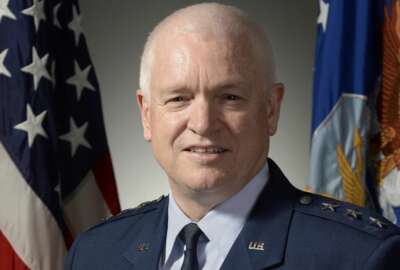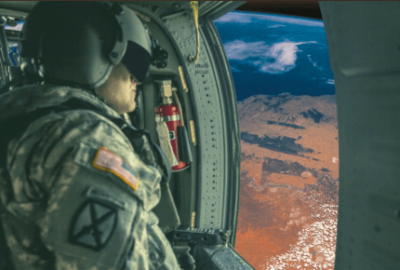
National Guard still says space component needed to complement Space Force
The Air Force will present a plan to Congress in March with more details on a Guard component.
Best listening experience is on Chrome, Firefox or Safari. Subscribe to Federal Drive’s daily audio interviews on Apple Podcasts or PodcastOne.
Now that a Space Force is officially established, the National Guard is making the case for its own separate space component, citing the domain as a 24/7 mission area that defends the homeland.
The Defense Department, Air Force and National Guard are currently in talks about the need and ability to create a Space National Guard, and will present their proposal to Congress in the middle of March.
The National Guard planned to create a space component alongside the Space Force even before Congress gave the new branch approval.
“I don’t see how we have a Space Force without a Space Guard,” Maj. Gen. Michael Loh, adjutant general of the Colorado National Guard, told reporters at the Pentagon Wednesday. “The organize, train and equip is going to come from that Space Force side. Otherwise, you are delinking the parent service with those forces that are supporting it.”
Maj. Gen. David Baldwin, adjutant general of California, said National Guard forces working in space today already provide homeland functions.
“In addition to doing federal mission, the National Guard is the primary response force domestically when you need military response, and we leverage a lot of space systems in California, and have integrated it into our daily operations when we respond to support civil authorities,” Baldwin said. “We use space-based systems on every single wildfire, not only to do mapping and control, but we now use those systems for fire detection.”
The National Guard has 1,500 space forces — 1,100 in the Air National Guard and the rest in the Army National Guard.
Brig. Gen. Patrick Cobb, deputy director of space operations for the National Guard, said the Space National Guard would be constricted to the eight states and one territory where the Guard already uses space units. Those areas are Colorado, California, Alaska, Florida, Hawaii, Arkansas, Ohio, New York and Guam.
“We are not looking to stand up 54 Space National Guards to cover every state and territory,” he said. “We only see there being some additional overhead in the particular states that participate in the mission. The concern that this would be creating this huge bureaucratic overhead is really not what we envision.”
The National Guard prepared to set up a space component when it started its space directorate. Baldwin said operationally the National Guard is ready to stand up its space side.
Most of the concerns are in the same areas that are hanging up the Space Force — administrative and human resources issues. The service wants to make sure once people are transferred over that they will get paid on time and retain their benefits.
There are also congressional permissions that still need to be afforded. The Space Force needs Congress to ensure all of the administrative functions are in order and to give permission for those that aren’t. The same goes for the Space National Guard when it comes to adding it as a legal entity to the Space Force.
Lt. Gen. David Thompson, Space Force vice commander, estimates there will be about 16,000 uniformed Space Force members in the active component, but it will take some time to get to that point.
The service will bring in members from every military branch by 2022, terminating their employment with the Army, Navy, Air Force or Marines and reenlisting them under the Space Force.
Copyright © 2024 Federal News Network. All rights reserved. This website is not intended for users located within the European Economic Area.
Scott Maucione is a defense reporter for Federal News Network and reports on human capital, workforce and the Defense Department at-large.
Follow @smaucioneWFED
Related Stories





